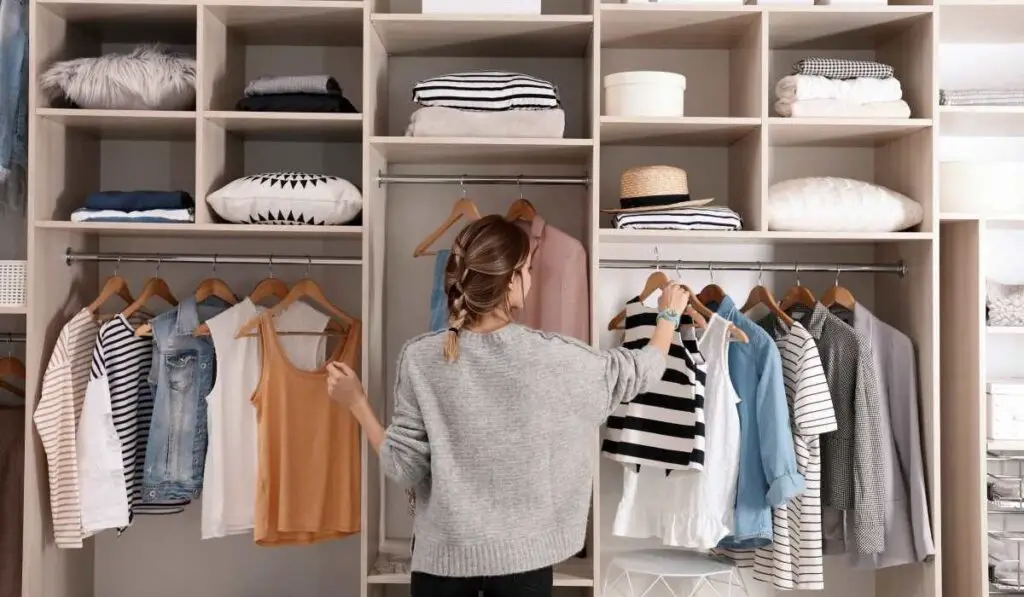Do you ever find yourself overwhelmed by a closet full of clothes, yet feeling like you have nothing to wear? I know I do. It’s so easy to fall into the trap of thinking that having more clothes means having more options, but in reality, it often leads to decision fatigue and a cluttered mind. That’s why I’ve been exploring the concept of a minimalist wardrobe lately, and let me tell you, it’s been a game-changer.
When it comes to building a minimalist wardrobe, the key is to prioritize quality over quantity. Instead of filling our closets with cheap, trendy pieces that we’ll only wear once or twice, we should focus on investing in high-quality, timeless items that will last for years to come. By doing so, we not only reduce our environmental impact but also save money in the long run. It’s all about looking for well-made, durable fabrics that won’t easily fade, tear, or go out of style. And trust me, once you start curating a collection of versatile, well-crafted pieces, you’ll never want to go back to your old shopping habits.
In my upcoming article, I’ll delve deeper into the benefits of a minimalist wardrobe and share some practical tips on how to achieve it. I’ll discuss the importance of decluttering and organizing our existing wardrobe, as well as how to make conscious purchasing decisions that align with our personal style and values. So if you’re tired of the constant overwhelm and want to simplify your life, stay tuned for some valuable insights on achieving a minimalist wardrobe. It’s time to embrace quality over quantity and create a closet that truly reflects who we are.
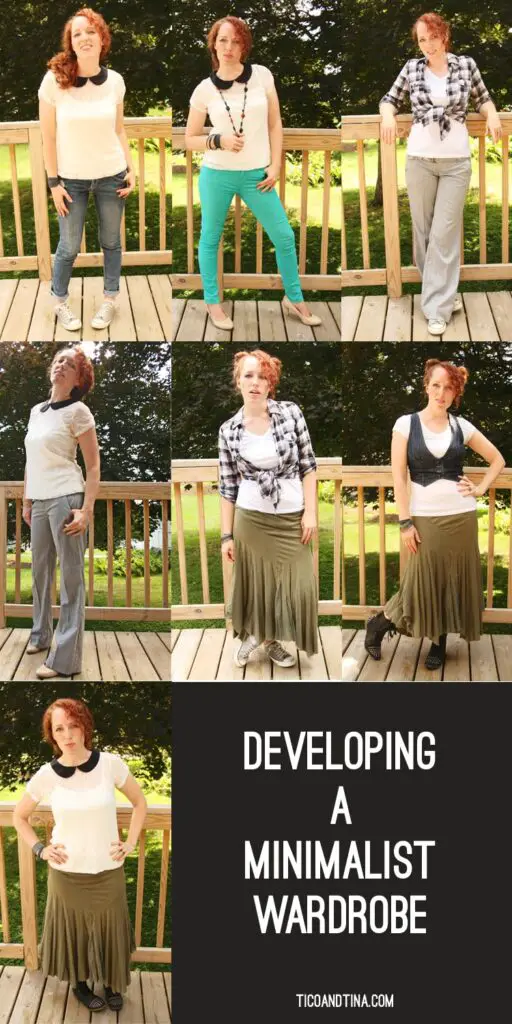
What is a Minimalist Wardrobe?
A minimalist wardrobe is a carefully curated collection of clothing items that focuses on quality over quantity. It is about owning fewer pieces that are versatile, durable, and timeless, rather than being swayed by trends and accumulating excessive amounts of clothing that ultimately go unworn. A minimalist wardrobe emphasizes simplicity, functionality, and conscious choices when it comes to clothing selection.
Definition of a Minimalist Wardrobe
A minimalist wardrobe is defined by its simplicity and intentional approach to clothing. It involves decluttering and organizing one’s closet in order to create a streamlined and efficient collection of essential items. It prioritizes quality in clothing selection and avoids the accumulation of unnecessary and unloved pieces. A minimalist wardrobe aims to provide a sense of ease and freedom when getting dressed while reducing decision fatigue and promoting a more sustainable way of living.
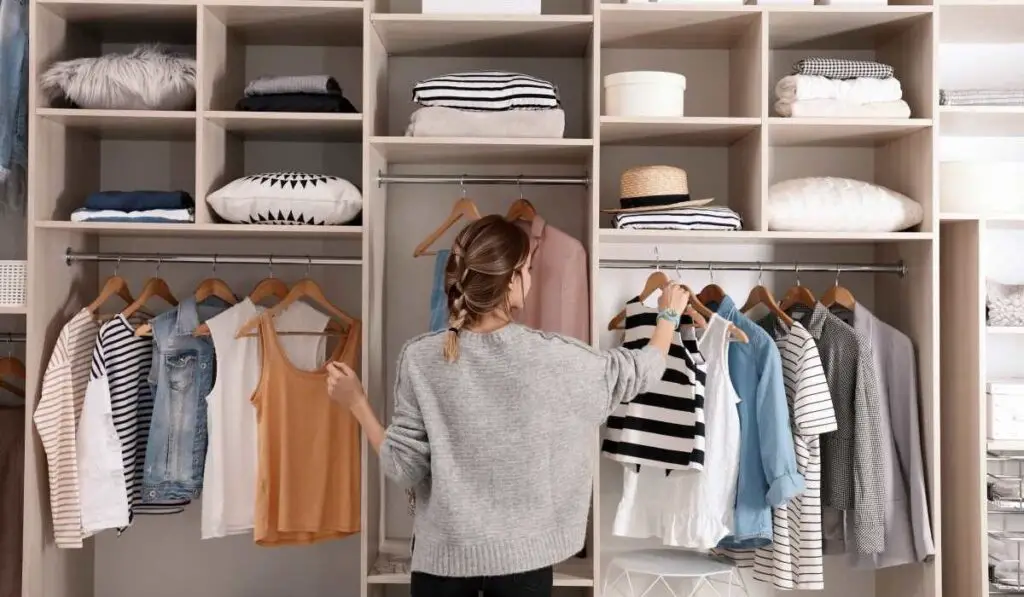
Qualities of a Minimalist Wardrobe
A minimalist wardrobe is characterized by several key qualities:
-
Versatility: The clothing items in a minimalist wardrobe are selected for their ability to be mixed and matched, allowing for a wide range of outfit combinations.
-
Timelessness: Minimalist wardrobes consist of classic and enduring pieces that can withstand shifting trends and remain relevant for years to come.
-
Durability: Quality over quantity is a fundamental principle of a minimalist wardrobe. Garments are chosen for their longevity, with an emphasis on durable materials and craftsmanship.
-
Functionality: Each item in a minimalist wardrobe serves a purpose and is carefully curated to meet the wearer’s specific needs and lifestyle.
-
Cohesion: A minimalist wardrobe is cohesive in terms of color palette, style, and overall aesthetic, making it easier to put together stylish and cohesive outfits effortlessly.
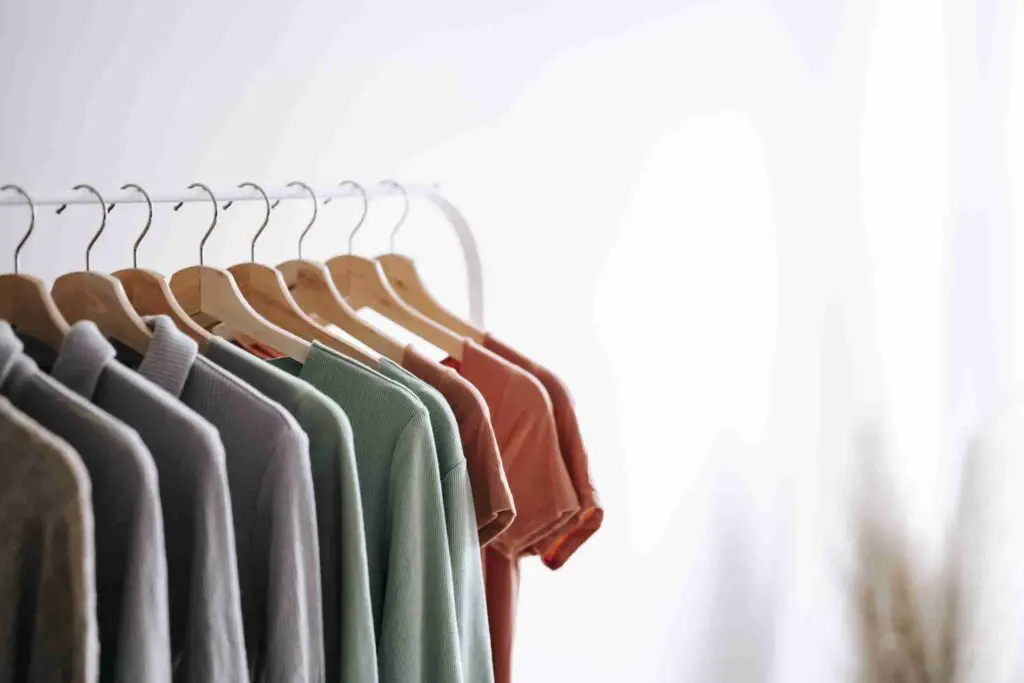
Benefits of having a Minimalist Wardrobe
-
Clarity and simplicity: A minimalist wardrobe reduces decision fatigue and simplifies the process of getting dressed each day. With fewer options to choose from, it becomes easier to create stylish outfits that reflect personal style.
-
Reduced environmental impact: By embracing a minimalist wardrobe, one can significantly reduce their contribution to the harmful practices of the fast-fashion industry. By choosing quality over quantity and investing in sustainable and ethical brands, individuals can play a part in making a positive difference.
-
Saved time and energy: Having a minimalist wardrobe eliminates the need to constantly search through a cluttered closet for something to wear. It allows for a more efficient and streamlined dressing routine, saving time and energy for more meaningful pursuits.
-
Saved money: By investing in higher-quality, longer-lasting clothing items, one may actually save money in the long run. Instead of constantly buying cheaper, lower-quality garments that need frequent replacing, a minimalist wardrobe encourages thoughtful buying decisions that prioritize durability and value.
-
Increased self-confidence: A well-curated minimalist wardrobe reflects a sense of personal style and establishes a strong foundation for self-expression. Knowing that every item in the closet is intentionally chosen and loved can boost confidence and self-assurance.
-
Freedom from consumerism: A minimalist wardrobe helps break free from the constant need for new clothes and the pressure to follow every trend. By focusing on quality and personal style, one can escape the trappings of consumerism and cultivate a more conscious and intentional approach to fashion.
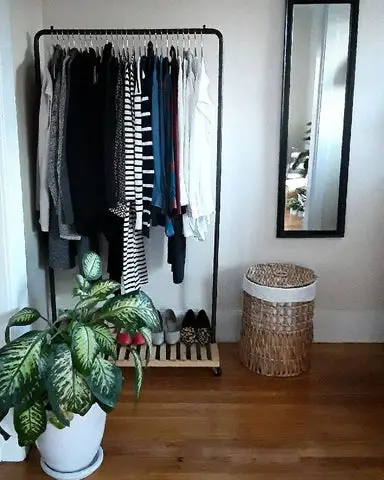
Choosing Quality over Quantity
In building a minimalist wardrobe, it is crucial to shift the focus from quantity to quality. The concept of quality goes beyond the surface level and encompasses factors such as materials, construction, durability, and ethical considerations.
Understanding the Concept of Quality
Quality in clothing can be understood by examining various aspects:
-
Materials: High-quality clothing is often made from natural fibers such as cotton, linen, silk, and wool. These materials are not only comfortable to wear but also tend to age better and have a lower environmental impact.
-
Construction: Attention to detail and precise craftsmanship are hallmarks of high-quality clothing. Seams, stitching, and buttons should be well-finished and durable, ensuring that the garment can withstand regular wear and washing.
-
Fit: Quality garments are designed with proper fit in mind. They flatter the wearer’s body shape and allow for ease of movement. A well-fitted garment not only looks better but also feels more comfortable to wear.
-
Ethical Considerations: Quality clothing also takes into account the ethical practices of the brand. This includes fair wages for workers, safe working conditions, and environmentally responsible production processes.
Why Choosing Quality is Important
Investing in quality clothing items offers several advantages:
-
Durability: Quality garments are made to last, meaning they can withstand frequent wear and washing without losing their shape or deteriorating. This longevity reduces the need for constant replacement, ultimately saving money and reducing waste.
-
Cost-effectiveness: While quality clothing may come with a higher upfront cost, it often proves to be more cost-effective in the long run. By choosing durable items, one can avoid the cycle of constantly buying cheaply made clothing that needs frequent replacing.
-
Comfort: High-quality materials tend to be more comfortable against the skin and offer better breathability. This can greatly enhance the overall wearing experience and increase satisfaction with the wardrobe.
-
Environmental impact: Fast fashion, characterized by cheaply made garments and rapid trend turnover, contributes to significant environmental damage. By investing in quality clothing that lasts, one can reduce their contribution to landfill waste and excessive resource consumption.
How to Determine Quality in Clothing
Determining the quality of clothing can be challenging, especially when shopping online or in fast-fashion stores. Here are some tips to help assess the quality of a garment:
-
Examine the fabric: Feel the fabric and assess its thickness, weight, and texture. Natural fibers tend to be more durable and higher in quality compared to synthetic alternatives.
-
Look at the stitching: Inspect the garment’s seams, hems, and stitching. Sturdy stitching with neat and even seams indicates better construction quality.
-
Check the buttons and zippers: Ensure that buttons are securely attached and made of high-quality materials. Zipper closures should be smooth and function properly.
-
Research brands and their practices: Before making a purchase, research the brand’s reputation, values, and production processes. Look for certifications and accreditations that indicate a commitment to sustainability and ethical labor practices.
Building a Minimalist Wardrobe
Building a minimalist wardrobe involves a thoughtful and intentional process that starts with assessing your current clothing collection and identifying essential items. Consider the following steps to begin building your own minimalist wardrobe:
Assessing Your Current Wardrobe
Start by taking an inventory of your current wardrobe. This involves setting aside dedicated time to go through each item, including clothing, shoes, and accessories. Evaluate each piece based on how often it is worn, its condition, and how well it reflects your personal style.
Identifying Essential Clothing Items
Once you have assessed your current wardrobe, identify the essential clothing items that form the foundation of your minimalist wardrobe. These items should be versatile, timeless, and reflect your personal style. Think about the colors, silhouettes, and materials that you gravitate towards and prioritize these in your selection.
Researching Sustainable and Ethical Brands
When building a minimalist wardrobe, it is essential to research and support sustainable and ethical brands. Look for brands that prioritize fair trade practices, use eco-friendly materials, and have transparent supply chains. Online resources and certifications such as Fair Trade, GOTS (Global Organic Textile Standard), and B Corp can help guide your decision-making process.
Investing in Versatile Pieces
Building a versatile wardrobe means choosing pieces that can be mixed and matched to create a variety of outfits. Invest in high-quality basics such as a well-tailored blazer, a pair of tailored pants, a versatile dress, and classic tops. These versatile pieces will form the backbone of your wardrobe and can be dressed up or down depending on the occasion.
Purging Your Wardrobe
After assessing your current wardrobe and identifying essential items, it’s time to purge your closet of unnecessary and unloved items. Adopting a minimalist mindset means letting go of clutter and only keeping the items that align with your personal style and serve a purpose.
Methods for Decluttering Your Closet
-
The KonMari Method: Popularized by Marie Kondo, this method involves assessing each item based on whether it sparks joy and brings positivity into your life. Keep only the items that make you feel happy and confident.
-
The Four-Box Method: This method involves labeling four boxes as “Keep,” “Donate,” “Sell,” and “Trash.” As you go through your wardrobe, place each item into one of the boxes based on its condition and usefulness.
-
The Capsule Wardrobe Approach: Adopting a capsule wardrobe mindset can help in decluttering your closet. Focus on creating a collection of essential, versatile items that can be mixed and matched. Set a limit on the number of items you want to keep and plan your wardrobe around those items.
Tips for Letting Go of Unnecessary Items
-
Consider the last time you wore an item: If you haven’t worn a particular garment in over a year or if it no longer fits, it’s time to let it go. Keeping items that are not being used only adds to clutter.
-
Prioritize quality over quantity: If you have multiple pieces that serve the same purpose, choose the higher-quality item and let go of the rest. Quality items will last longer and provide more value.
-
Embrace the idea of minimalism: Embrace the mindset that letting go of unnecessary items creates space for new experiences and a more focused and intentional wardrobe.
Donating or Selling Unwanted Clothing
Once you have decluttered your closet, consider donating or selling the items that no longer serve you. Donating to local charities or clothing drives can help those in need, while selling clothing items in good condition can be a way to recoup some of your investment and give others the opportunity to enjoy quality pieces at a lower price.
Sustainable Fashion Practices
The rise of fast fashion has led to detrimental environmental and social consequences. Embracing sustainable fashion practices is crucial for minimizing these impacts and building a more conscious wardrobe.
The Environmental Impact of Fast Fashion
Fast fashion has created a culture of disposable clothing, resulting in massive amounts of textile waste. The constant production and disposal of cheaply made garments contribute to pollution, water depletion, and excessive resource consumption. Additionally, the harmful chemicals used in textile dyeing and production contribute to water pollution and health risks for workers.
Why Choosing Sustainable Fashion Matters
Choosing sustainable fashion is essential for several reasons:
-
Environmental preservation: Sustainable fashion practices aim to reduce the industry’s carbon footprint, minimize waste, and prioritize eco-friendly manufacturing processes. By choosing sustainable brands, we contribute to a healthier planet.
-
Support for ethical labor practices: Sustainable fashion brands typically prioritize fair wages, safe working conditions, and ethical treatment of garment workers. Supporting these brands helps combat exploitative labor practices.
-
Reduction of textile waste: The fashion industry is responsible for enormous amounts of textile waste. By choosing sustainable fashion, recycling, and repurposing clothing, we can help minimize the impact on landfills and promote a circular economy.
Promoting Ethical Production and Labor Practices
When embracing sustainable fashion, it is essential to support brands that prioritize ethical production and labor practices. Look for brands that adhere to fair trade principles, provide safe working conditions, and ensure fair wages for all workers involved in the production process. By supporting such brands, we contribute to a more equitable and ethical fashion industry.
Exploring Alternative Options like Second-hand Shopping
Another way to embrace sustainable fashion is by exploring alternative shopping options such as second-hand shopping. Thrift stores, consignment shops, and online marketplaces offer a wide range of pre-loved clothing that is still in excellent condition. Shopping second-hand not only extends the lifespan of garments but also reduces the demand for new production, saving resources and reducing waste.
Organizing and Maintaining a Minimalist Wardrobe
Effectively organizing and maintaining a minimalist wardrobe is essential for creating a clutter-free and efficient space that enhances the overall dressing experience.
Effective Closet Organization Strategies
-
Categorize clothing items: Organize your wardrobe by categorizing clothing items into sections such as tops, bottoms, dresses, and outerwear. This makes it easier to find specific items and create outfits.
-
Utilize storage solutions: Invest in storage solutions such as hangers, drawers, and shoe racks that help maximize space and keep items organized. Consider using clear storage containers for seasonal items to keep them protected and easily accessible.
-
Practice the “one in, one out” rule: As you add new items to your wardrobe, make a conscious effort to remove an item of similar category or purpose. This ensures that your wardrobe remains streamlined and prevents it from becoming cluttered again.
Tips for Maintaining a Clutter-free Wardrobe
-
Regularly assess your wardrobe: Set aside time periodically to evaluate your wardrobe and identify any items that are no longer being worn or do not align with your personal style. By regularly decluttering, you can prevent accumulation and maintain a clutter-free wardrobe.
-
Avoid impulsive purchases: Before making a new purchase, take a step back and evaluate whether the item aligns with your personal style and is something you genuinely need. Avoid purchasing items on impulse to prevent unnecessary additions to your wardrobe.
Storing and Preserving Clothing Properly
To maintain the longevity of your clothing items, it is essential to store and preserve them properly:
-
Follow care instructions: Read and follow the care instructions provided by brands to ensure proper cleaning and maintenance. Different fabrics have different requirements and treating them accordingly will help prolong their lifespan.
-
Invest in proper hangers: Avoid using wire hangers, as they can cause misshaping and damage to clothing. Instead, opt for wooden or padded hangers that provide proper support and preserve the garment’s shape.
-
Fold delicate items: Delicate and knitted items are best folded rather than hung, as hanging can cause stretching and distortion. Fold them neatly and store them in drawers or on shelves.
Creating Versatile Outfits
One of the key advantages of a minimalist wardrobe is the ability to create versatile outfits using a limited number of items. Mixing and matching clothing pieces, as well as incorporating layering techniques, can greatly enhance the range of outfits that can be created.
Mixing and Matching Clothing Pieces
Versatility is an essential aspect of a minimalist wardrobe. Focus on choosing pieces that can be easily mixed and matched to create various outfit combinations. Consider selecting items in coordinating colors and complementary styles, ensuring they work well together when layered or worn individually.
Layering Techniques for Various Seasons
Layering is a versatile styling technique that can adapt your wardrobe to different weather conditions and extend the wearability of items throughout the year. During colder months, layering thin sweaters or cardigans over dresses or tops can add warmth and create new outfit possibilities. During transitional seasons, lightweight jackets or blazers can be layered over basic tops, allowing for easy removal as temperatures change.
Enhancing Outfits with Accessories
Accessories play a crucial role in elevating and enhancing minimalist outfits. By strategically incorporating accessories, such as statement jewelry, scarves, belts, or hats, you can add interest and depth to even the simplest outfits. Experiment with different combinations to create unique and personalized looks.
Maximizing Wear and Value
Caring for clothing items properly and finding innovative ways to maximize wear and value can significantly prolong the lifespan of your wardrobe.
Caring for Clothing to Prolong Its Lifespan
Proper care and maintenance of clothing items are essential for ensuring their longevity:
-
Follow care instructions: Always follow the care instructions provided by the brand. These instructions often specify the appropriate temperature, washing method, and drying techniques for each garment.
-
Wash items only when necessary: Overwashing clothing can cause wear and tear. Consider spot cleaning or airing out items before resorting to a full wash.
-
Hang or fold clothing properly: Hanging or folding clothing items following the appropriate method, as outlined earlier, will help them maintain their shape and avoid unnecessary wrinkling.
Repairing and Altering Garments
If a garment develops a minor tear or loses a button, consider repairing it rather than immediately discarding it. Basic sewing skills can be useful in mending simple issues, or you can visit a local tailor to handle alterations and repairs. By investing in minor repairs, you can extend the life of your wardrobe and minimize waste.
Reinventing Outfits with Different Styling
Another way to maximize wear and value is by reinventing outfits through different styling techniques. Experiment with new combinations, try layering garments in unique ways, and explore different accessories to create fresh and exciting looks without adding new items to your wardrobe.
Overcoming Consumerism and Trend Obsession
Consumerism and trend obsession can lead to mindless shopping and a constant need for new clothes. Overcoming these tendencies is essential for achieving a minimalist wardrobe.
Understanding the Negative Impacts of Consumerism
Consumerism revolves around the constant desire for new and more, often at the expense of the environment, ethical manufacturing practices, and personal finances. It creates a cycle of perpetual dissatisfaction and can lead to excessive waste and clutter.
Breaking Free from the Constant Need for New Clothes
To break free from the constant need for new clothes, embrace the mindset of “buy less, choose well.” Focus on quality, versatility, and personal style rather than seeking validation through constant consumption. Shift your mindset from quantity to quality and prioritize items that truly bring joy and serve a purpose in your wardrobe.
Avoiding Excessive Trend-following
Trends come and go, often at a rapid pace. Instead of constantly chasing fleeting trends, focus on building a wardrobe that reflects your personal style and stands the test of time. Classic, timeless garments will always be in fashion, allowing you to create stylish outfits without succumbing to excessive trend-following.
Capsule Wardrobes and Minimalist Capsules
Capsule wardrobes offer an effective approach to creating a minimalist wardrobe and further enhancing its functionality.
Explaining the Concept of a Capsule Wardrobe
A capsule wardrobe is a collection of essential clothing items that can be mixed and matched to create a variety of outfits. The concept of a capsule wardrobe involves paring down your wardrobe to a specific number of versatile pieces that can be easily combined to suit any occasion or season.
Benefits of Incorporating Capsules in a Minimalist Wardrobe
Incorporating capsules into a minimalist wardrobe offers several benefits:
-
Simplified decision-making: A capsule wardrobe streamlines the process of getting dressed by providing a limited selection of items to choose from. This reduces decision fatigue and saves time when creating outfits.
-
Enhanced versatility: By carefully curating and selecting versatile clothing items within a specific capsule, you can maximize the number of outfit combinations that can be created.
-
Reduced clutter: Capsule wardrobes typically consist of a smaller number of carefully chosen pieces, resulting in a clutter-free and more organized wardrobe environment.
Creating Your Own Capsule Wardrobe
Creating a capsule wardrobe involves carefully selecting a specific number of essential items that reflect your personal style and suit your lifestyle. Consider the following steps when creating your own capsule wardrobe:
-
Assess your lifestyle: Determine the needs and requirements of your daily life, including work, hobbies, and social activities. This will help you identify the types of clothing items you require in your capsule wardrobe.
-
Determine the number of items: Decide on the number of items you want to include in your capsule wardrobe. This can be a specific number or a range that suits your preferences and space constraints.
-
Select versatile pieces: Curate a collection of versatile pieces that can be mixed and matched to create various outfits. Think about coordinating colors, complementary styles, and items that work well in different seasons.
Tips for Shopping Wisely
Shopping wisely is essential for maintaining a minimalist wardrobe and avoiding impulsive purchases that contribute to clutter.
Planning Your Purchases Ahead of Time
Before making a purchase, take the time to research and plan. Ask yourself if the item truly meets your needs and if it aligns with your overall style and wardrobe. Consider prioritizing items that can fill gaps in your wardrobe or items that will enhance and complement existing pieces.
Understanding Personal Style and Needs
Understanding your personal style and needs is crucial when shopping wisely. Consider your lifestyle, preferred aesthetics, and the types of clothing that make you feel confident and comfortable. By focusing on items that reflect your personal style, you will be less likely to succumb to impulse purchases or trends that do not align with your wardrobe.
Making Conscious and Informed Buying Decisions
Before making a purchase, seek information about the brand’s ethical practices, quality standards, and environmental impact. Look for certifications such as Fair Trade, organic, or eco-friendly labels that promote sustainable and ethical production processes. Be mindful of the materials used, the durability of the garment, and whether it aligns with your personal values.
The Psychology of Minimalism
A minimalist wardrobe has a profound impact on the mindset of the individual embracing this lifestyle.
How a Minimalist Wardrobe Affects Our Mindset
A minimalist wardrobe can positively impact our mindset in several ways:
-
Increased clarity and focus: A clutter-free and well-curated wardrobe eliminates decision fatigue and reduces distractions. This allows individuals to focus on more important aspects of their lives, leading to increased clarity and productivity.
-
Reduced stress and anxiety: A minimalist wardrobe eliminates the stress and anxiety associated with navigating a cluttered and overwhelming closet. The simplicity and organization of a minimalist wardrobe promote a sense of calm and well-being.
-
Enhanced self-awareness: By adopting a minimalist wardrobe, individuals become more aware of their personal style, preferences, and values. This self-awareness extends beyond clothing choices and can influence other areas of life, such as decision-making and personal growth.
Building Discipline and Contentment
Embracing a minimalist wardrobe requires discipline and contentment:
-
Discipline: Building a minimalist wardrobe requires discipline to resist the urge to indulge in mindless shopping or accumulate unnecessary items. It involves making conscious choices based on needs rather than wants.
-
Contentment: A minimalist wardrobe promotes contentment with what one already possesses. It shifts the focus from constantly wanting more to embracing and appreciating what is already in one’s possession. This contentment frees individuals from the cycle of constant consumption and fosters gratitude for the items that truly bring joy and value.
Consumerism’s Influence on Happiness
Consumerism promises happiness and fulfillment through material possessions, but this shallow and temporary satisfaction often leads to feelings of emptiness and the need for more. Embracing minimalism challenges this notion and encourages individuals to seek happiness through experiences, relationships, personal growth, and contribution. By prioritizing what truly matters, individuals can cultivate a more sustained and fulfilling form of happiness.
Incorporating Minimalism into Other Areas of Life
The principles of minimalism extend beyond the wardrobe and can be applied to other areas of life, including home organization, personal belongings, and daily routines.
Applying Minimalist Principles to Home Organization
Minimalist principles can be applied to create streamlined and organized living spaces:
-
Declutter regularly: Adopt a regular decluttering routine to eliminate unnecessary items from your home. Assess each item and consider its purpose and value in your life before deciding whether to keep or let go.
-
Embrace minimal decor: Opt for clean lines, functional furniture, and minimal decor accessories that spark joy and contribute to the overall aesthetic of your home.
-
Organize with intention: Thoughtfully organize your belongings, keeping similar items together and utilizing storage solutions that maximize space and promote a clutter-free environment.
Adopting a Minimalist Approach to Personal Belongings
A minimalist approach to personal belongings involves being mindful of the items we own:
-
Prioritize quality over quantity: Focus on collecting high-quality items that are built to last and bring long-term value to your life.
-
Reduce sentimental attachment: While it is natural to attach sentimental value to certain belongings, practice discernment and let go of items that no longer serve a purpose or bring joy.
Implementing Minimalism in Daily Routines
Minimalism can also be applied to daily routines and habits:
-
Streamline your schedule: Simplify your daily schedule by prioritizing activities that align with your goals and values. Eliminate unnecessary commitments and focus on what truly matters to you.
-
Practice mindfulness: Cultivate a practice of mindfulness throughout your day, whether it be through meditation, journaling, or simply being fully present in each moment.
Conclusion
Achieving a minimalist wardrobe is a journey that involves shifting our mindset from a focus on quantity to a focus on quality. By prioritizing versatile, durable, and timeless pieces, we can create a curated wardrobe that reflects our personal style and aligns with our values. Embracing a minimalist wardrobe offers numerous benefits, including reduced decision fatigue, a reduced environmental impact, saved time and money, increased self-confidence, and the freedom from consumerism. By choosing quality over quantity and incorporating sustainable fashion practices, we contribute to a more sustainable and fulfilling lifestyle. Embracing simplicity and conscious choices in our clothing selections can extend beyond our wardrobes and inspire us to apply minimalist principles to other areas of our lives, fostering a sense of contentment, clarity, and gratitude. Achieving a minimalist wardrobe is about more than just our clothes – it is about embracing a simplified and intentional way of living that promotes personal growth, environmental stewardship, and overall well-being.


